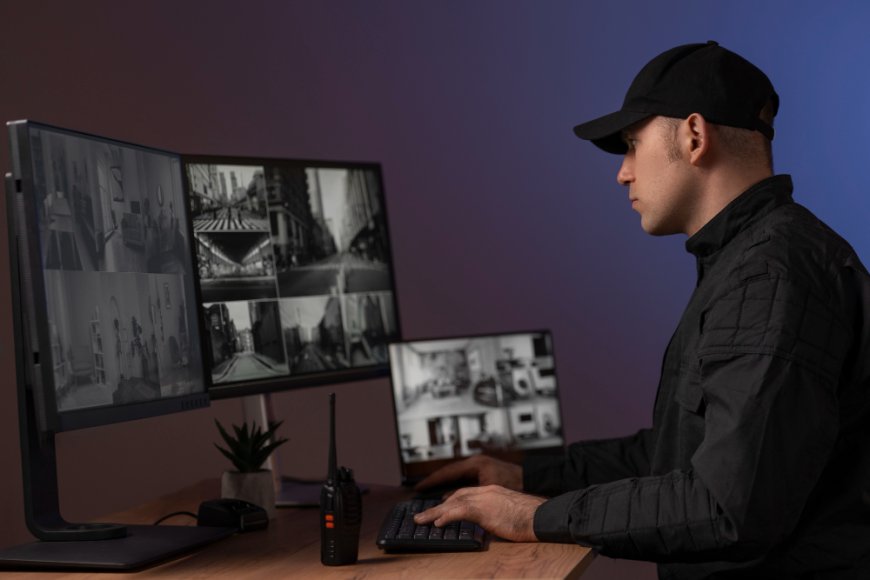How Facial Recognition & Emotion Analysis Are Revolutionizing Public Surveillance
Facial recognition & emotion analysis enable real-time identity verification and behavioral insights for smarter, AI-driven security and engagement.

Introduction
As urban populations continue to grow and cities become more connected, public safety has emerged as a major concern for governments, law enforcement agencies, and city planners. Traditional surveillance systems, while effective in monitoring large areas, often fall short when it comes to proactive threat detection and real-time decision-making. The need for more intelligent systems has given rise to a new era of security technologyone where facial recognition & emotion analysis play a transformative role.
These AI-powered tools are reshaping the landscape of public surveillance by adding context, accuracy, and predictive insight to video feeds. From identifying individuals in crowds to detecting stress, aggression, or suspicious behavior, these technologies are setting a new standard in how public spaces are monitored and secured.
The Evolution of Surveillance: From Passive to Intelligent
In the past, surveillance systems relied heavily on human operators to interpret camera feeds and identify potential threats. This approach was not only labor-intensive but also prone to oversight, fatigue, and subjectivity. As the number of cameras and volume of footage increased, the limitations of manual monitoring became evident.
The shift toward intelligent surveillance marks a significant upgrade. By integrating technologies such as facial recognition and emotion detection into video management systems, security professionals can now detect anomalies automatically, receive instant alerts, and make data-driven decisions with far greater speed and accuracy.
Understanding Facial Recognition and Emotion Analysis
Facial Recognition: Identifying the Who
Facial recognition is a biometric technology that uses AI algorithms to identify individuals by analyzing facial features from images or video footage. It maps a persons face mathematically and compares it to a database to confirm identity. In public surveillance, this can be used to:
-
Identify persons of interest or suspects in real-time
-
Monitor attendance in sensitive areas
-
Enforce restricted area access controls
-
Assist in missing persons investigations
Emotion Analysis: Understanding the Why
While facial recognition identifies individuals, emotion analysis interprets their expressions. This involves analyzing micro-expressionssubtle facial cues that reflect emotional states like fear, anger, stress, or confusion. When used in public areas, emotion detection can help:
-
Flag individuals displaying signs of distress or agitation
-
Preemptively identify suspicious or erratic behavior
-
Enhance crowd monitoring at events or transportation hubs
-
Support law enforcement during crisis situations
Together, facial recognition & emotion analysis create a dual-layered system that goes beyond identification to understand behavioral intentmaking surveillance not just reactive, but predictive.
Enhancing Public Safety with Smart Surveillance
One of the most powerful applications of these technologies is in enhancing public safety at scale. For instance, at airports, train stations, or sports stadiums, thousands of people pass through every hour. Monitoring each individual manually is virtually impossible. AI-powered surveillance systems can scan faces in real time, cross-reference with watchlists, and even detect emotional anomalies that might indicate a threat.
By integrating facial recognition & emotion analysis into city-wide surveillance grids, authorities can:
-
Improve response times to unfolding incidents
-
Reduce reliance on manpower for basic monitoring
-
Detect threats before they escalate into violent acts
-
Track movement patterns to optimize security deployments
This kind of intelligent infrastructure also facilitates post-event analysis, helping investigators trace events backwards using video logs enhanced with emotion and identity tagging.
The Role of Video Analytics in Urban Governance
These technologies dont operate in isolation. They are a part of the broader evolution of video analytics, which includes motion detection, object tracking, license plate recognition, and people counting.
Modern city surveillance networks are now powered by AI-based video analytics that can interpret massive volumes of visual data in real-time. Facial and emotional analysis act as layers within this ecosystem, providing depth and psychological context to physical movements and behaviors captured on camera.
Urban planners and government agencies are increasingly relying on such analytics to:
-
Manage crowds at public gatherings
-
Prevent vandalism and street crimes
-
Monitor public sentiment in high-tension zones
-
Optimize resource allocation in law enforcement
Ethical Considerations and Responsible Use
With great power comes great responsibility. As facial recognition and emotion analysis become more prevalent, concerns about privacy, data security, and ethical usage are growing. The deployment of these technologies must be guided by clear legal frameworks, public awareness, and stringent data protection policies.
Some best practices for responsible implementation include:
-
Ensuring transparency about data collection and use
-
Implementing opt-in consent where feasible
-
Enforcing strict access control on biometric databases
-
Using anonymized data for analytics and training AI models
Addressing these concerns proactively is critical to building public trust and ensuring the long-term viability of these transformative tools.
Conclusion
The emergence of facial recognition & emotion analysis marks a turning point in the way public surveillance is conducted. By combining identity verification with behavioral insight, these technologies empower authorities to act faster, respond smarter, and ensure safer environments for the public.
When integrated with intelligent video analytics platforms, they form a surveillance ecosystem that is not just watchfulbut insightful. As adoption continues to rise, the focus must also shift toward ethical deployment, ensuring that this powerful technology is used with the care, transparency, and accountability it demands.
Public safety is no longer just about watchingits about understanding. And thats the revolution intelligent surveillance is bringing to our streets, cities, and societies.










































